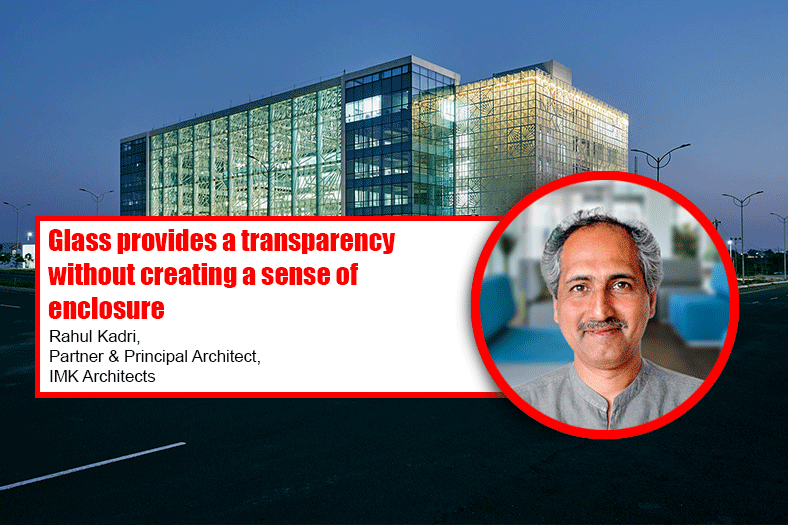Safety First
Satish Kumar, Director of Elumatec India highlights the safety standard at Indian industry and the road ahead for fenestration business
Recently I attended a conference on Façade Design in Mumbai. Though the rains played spoilsport and prevented speakers / delegates from reaching the venue, couple of presentations were very good. Most interesting for me was the presentation about the façade design and installation of the Burj Khalifa – world’s tallest tower. The trials, troubles and finally triumph – Al Ghurair or Arabian aluminium as it was called before went through while working on the project is really commendable. Trials were done at factory for installation of the panels, drills were conducted in-house, on the ground and at site before the actual installation begun. Only when they were sure that the workers understood how to handle the panels, how to sync with each other and fit in the panels with spoken and unspoken communication did the work commence because nobody had the experience of working over a certain height. Nobody had done an 850-metre tower before. Throughout the presentation what amazed me more was the focus of the top management on safety.
Recently, in an apartment complex at Thane, glass from the balcony railing fell off the 16th floor. Luckily no one was below but imagine a glass panel falling down from such a height! It can actually slice metal / concrete forget human body. It is surprising that the safety takes a back step in India. Take the fire incident at the Maharashtra Mantralaya or the incident at Bangalore where a fire safety drill went horribly wrong; the rope snapped and a lady fell to her death. We are talking of a safety drill! Couple of years back a window pane from a 5-Star hotel was blown off from one of the floors and landed on a lady at the pool. In India, every other day there are incidents like this. Are we waiting for something major to happen before we take action? Or is human life in India so cheap?Many project sites today are very strict on safety. They have safety inspectors doing the rounds and penalising defaulting vendors / contractors. Once I had an interesting conversation with a façade contractor regarding site safety. His major headache was to make his site people wear not only proper safety helmets but also strap them on properly, to use a proper electrical plug and socket for the drilling machines/electrical screw drivers and to tie the laces of their safety shoes. It sounds basic so why is it a headache? Hot and humid Chennai – workers don’t like to wear helmets – they prefer not to disturb their latest hairstyle probably; they cut the plug and insert the wire into the socket with the help of match sticks so that it is easier to pull out at the end of the day or when they move from one place to another – how many minutes /seconds does one need to pull out a plug from the socket?
A façade /external window needs not only to be designed to take care of wind loads but also be designed for safe operation. In India, we have external opening windows which mean the hinges have to work efficiently throughout the life of the window. Who checks these hinges? Many places the hinges are not of stainless steel.
This is not all. Did you know?• Only 40 per cent of the facades in India are actually glazed as per norms recommended and warranted by Silicone suppliers.• There is no regulation for use of safety glass. Huge pane of glasses which are neither laminated nor toughened are installed at public buildings like malls and cinema halls.• Anchor bolts are drilled through rebars, some are not even fixed to the depth required to acquire the strength, columns and load members are indiscriminately drilled, etc.• Aluminium composite panels with polyethylene core are used in commercial high human traffic buildings. In case of fire, polyethylene adds fuel to the fire.• No check between what is specified and what is actually installed. Many items like brackets, anchor fasteners get hidden in the spandrel area and cannot be checked once installed and firestops are sealed in. In process checks are required.
How can we take on mega projects like the Burj Khalifa if we don’t take care of small issues in-house? Training people is an expensive affair, agreed but there are many things possible with the help of vendors. Some of the leading companies in the industry do this to help people understand and use their products the right way. • Anchor bolt selection so that proper fasteners are used– Hilti/Wuerth• Cast in channels – the latest technology for faster installation of brackets – Jordhal/Halfen.• Selection of glass – almost all glass companies offer it for free.• Silicone application – Dow Corning, Momentive and MccoySoudal conduct training classes.• Selection of proper hinges / rollers – Giesse / Roto can offer their technical expertise.• Fabrication – System companies like Schueco and Hydro have in-house training centres.
All we have to do is set aside couple of hours a week for training. It will go a long way. We will be able to take on mega projects only if we correct small things at home. Can we do a Burj Khalifa? Some may say India will never be able to do such projects. Well they are coming. Lodha group’s World One Tower – tallest residential building in the world. Mantri Pinacle – Tallest building in South India. So, are we ready?
Cookie Consent
We use cookies to personalize your experience. By continuing to visit this website you agree to our Terms & Conditions, Privacy Policy and Cookie Policy.






